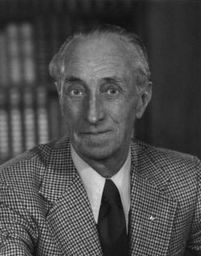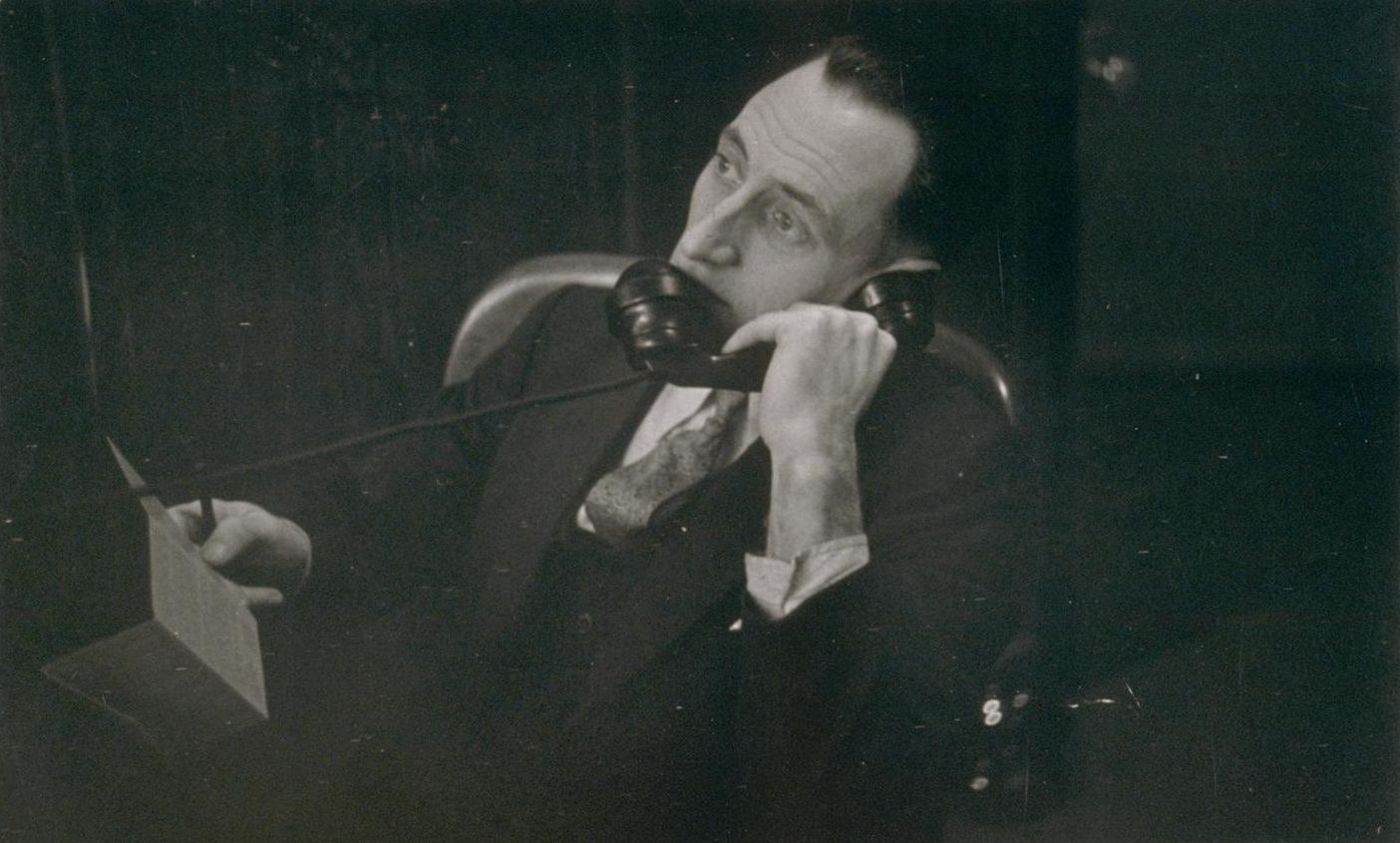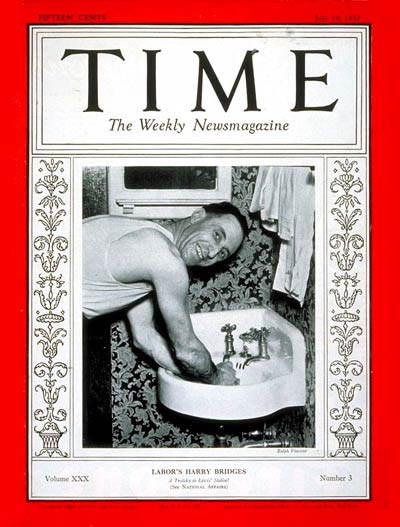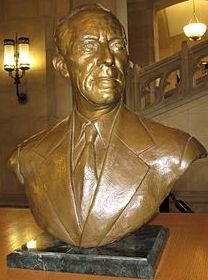Harry Bridges was an Australian-born American union leader, first with the International Longshoremen's Association (ILA). In 1937, he led several chapters in forming a new union, the International Longshore and Warehouse Union (ILWU), expanding members to workers in warehouses, and led it for the next 40 years. In the 1990s Bridges was revealed to have been a member of the Communist Party USA in the 1930s. He was prosecuted for his labor organizing and believed subversive status by the U.S. government during the 1930s, 1940s, and 1950s, with the goal of deportation. This was never achieved.
Bridges became a naturalized citizen in 1945. His conviction by a federal jury for having lied about his Communist Party membership when seeking naturalization was overturned by the Supreme Court in 1953 as having been prosecuted untimely, outside the statute of limitations. His official power was reduced when the ILWU was expelled by the CIO in 1950, but he continued to be re-elected by the California membership and was highly influential until his retirement in 1977. On the West Coast, Bridges is a historical figure who still excites passions both for and against the labor movement.
Harry Bridges was an Australian-born American union leader, first with the International Longshoremen's Association (ILA). In 1937, he led several chapters in forming a new union, the International Longshore and Warehouse Union (ILWU), expanding members to workers in warehouses, and led it for the next 40 years. In the 1990s Bridges was revealed to have been a member of the Communist Party USA in the 1930s. He was prosecuted for his labor organizing and believed subversive status by the U.S. government during the 1930s, 1940s, and 1950s, with the goal of deportation. This was never achieved.
Bridges became a naturalized citizen in 1945. His conviction by a federal jury for having lied about his Communist Party membership when seeking naturalization was overturned by the Supreme Court in 1953 as having been prosecuted untimely, outside the statute of limitations. His official power was reduced when the ILWU was expelled by the CIO in 1950, but he continued to be re-elected by the California membership and was highly influential until his retirement in 1977. On the West Coast, Bridges is a historical figure who still excites passions both for and against the labor movement.
Sponsored by Ancestry
Advertisement
Advertisement







